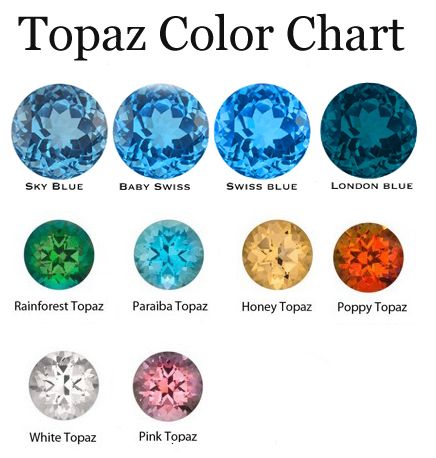
Topaz also known as “Pittdoh” in Hebrew remained unknown until the mid-18th century. The Konigskone topaz mine in Saxony was the first commercially exploited deposit of Topaz. It was discovered in 1734 and worked till 1800 producing bright yellow crystals.
According to some, chrysolite was the ancient name for the oriental Topaz. It is one of the stones noticed in the bible and was in middle ages, considered to be the emblem of apostle James the younger. Alternatively, the word topaz may be related to the Sanskrit word “tapas”, meaning “heat” or “fire”.
Properties
Specific gravity falls in the range of 3.6-4.2 , while on hardness it’s 8 on Moh’s scale. It possesses double refraction though in a small degree.
Location
Brazilian town of Ouro Preto holds almost all of the entire worlds known commercial reserves of imperial and precious Topaz. Smaller deposits of Topaz have been found in Mexico, Srilanka, Burma, Pakistan as well.
Ouro Preto meaning “black gold” is the only location which is currently producing commercial quantities of natural gem-quality Topaz.
The Topaz can be divided into two kinds based on the chemical composition. These are Oriental topaz (composed of pure alumina) & Occidental which contains 57 parts of alumina, the rest consisting of silica and fluorine.
Colours
Nearly all the blue topaz which we see in the market is colour enhanced through a combination of irradiation and heat treatment. Natural blue is extremely rare in nature. Apart from blue, yellow, peach, pink, dark red and red also occur.
The most valuable colours of Topaz are the golden orange-yellow type, called Imperial Topaz, and the dark pinkish-red and orange-red colours. The value increases with a deepness of colour in orange and reddish hues. The most commonly used colours of Topaz in jewellery are blue types. Unlike the blue of mass-market topazes, the red of red Topaz cannot be fabricated in a laboratory. If geological conditions at the source aren’t right, a Topaz crystal will never be red.
Topaz in its natural state is a golden brown to yellow – a characteristic which means it is sometimes confused with citrine, a less valuable gemstone.
Saturation
Brown is the dominant saturation along with grey in pink stones.
Topaz is one of the few stones that look best under incandescent light and holds up very well in low lights as well. In fluorescent light it loses both colour and tone.
Clarity and treatments

pic courtesy- google
Topaz is normally eye-clean. According to Navneet Agarwal, of Navneet gems, a firm specializing in gem trade from past 25 years and located in Bangkok, a white Topaz can be made into many different colours like sky blue, swiss blue, London blue and pink. Additionally, Topaz can be coated with other colours as well.
According to Navneet “Swiss and London blue take the maximum amount of time of 5 years to be radiation-free after irradiation treatment. Mines do play a big role in getting the best colours during the treatment process. Best white Topaz comes from Orissa(India) and Srilanka”.
Due to its availability in a wide range of colours, affordable prices and hardness of 8 on Mohs scale its a very good option for jewellery.





